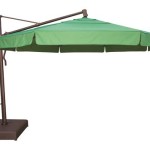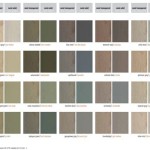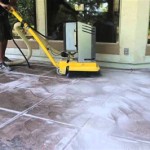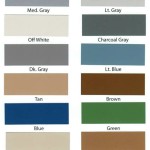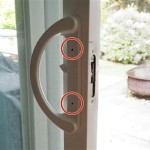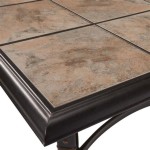Best Ways to Repel Bugs on Your Patio
Enjoying the outdoors is a significant part of improving quality of life, particularly during warmer months. However, unwelcome insect guests can quickly turn a pleasant patio experience into an irritating ordeal. Implementing effective bug repellent strategies is crucial for maintaining a comfortable and enjoyable outdoor living space. This article explores various methods, from natural remedies to technological solutions, for repelling bugs and reclaiming your patio.
Understanding the Target: Identifying Common Patio Pests
Before implementing any repellent strategies, it's essential to identify the specific types of bugs plaguing your patio. Common offenders often include mosquitoes, flies, ants, spiders, and gnats. Each of these pests exhibits different behaviors and responds differently to various repellents. Mosquitoes, for example, are attracted to carbon dioxide, body heat, and certain scents, while flies are drawn to decaying organic matter. Ants follow scent trails, and spiders hunt for insects. Identifying the primary culprits allows for a more targeted and effective approach to bug control.
Consider observing the bugs on your patio at different times of the day and under varying weather conditions. Note their behavior, such as where they congregate, when they are most active, and what they seem to be attracted to. This information will guide the selection of appropriate repellent methods. For instance, if mosquitoes are primarily active at dusk, focusing on repellents effective during that time is crucial.
Knowing the specific bug species also helps in understanding their breeding habits and preferred environments. This knowledge can inform preventative measures, such as eliminating standing water to deter mosquitoes or removing food sources to discourage ants and flies. A proactive approach, based on understanding the target pests, is often more effective than simply reacting to their presence.
Natural and Plant-Based Repellents
For individuals seeking environmentally friendly and less intrusive methods, natural and plant-based repellents offer a viable alternative to chemical insecticides. These solutions harness the power of natural compounds to deter bugs without posing significant risks to humans, pets, or the environment. Several plants and essential oils possess insect-repelling properties and can be strategically incorporated into your patio environment.
Citronella is perhaps the most well-known natural insect repellent. It contains compounds that mask the scents that attract mosquitoes and other biting insects. Citronella candles, torches, and sprays are readily available and relatively effective, especially in enclosed or smaller patio areas. However, the effectiveness can vary depending on the concentration of citronella and the wind conditions.
Other plants known for their insect-repelling properties include lavender, rosemary, basil, mint, and marigolds. Planting these around the perimeter of your patio can create a natural barrier against bugs. The strong scents of these plants deter insects, making the area less appealing to them. Additionally, these plants add aesthetic value to your outdoor space and can be used for culinary purposes.
Essential oils extracted from these plants can also be used in diffusers or diluted with water and sprayed around the patio. Peppermint, eucalyptus, tea tree, and lemongrass oils are particularly effective against a variety of insects. When using essential oils, it's crucial to dilute them properly, as concentrated oils can be irritating to the skin and eyes. Always perform a patch test before applying diluted essential oils directly to the skin.
Diatomaceous earth (DE) is another natural repellent that can be used to control crawling insects like ants, fleas, and ticks. DE is a powder made from fossilized diatoms and works by dehydrating insects that come into contact with it. It is generally safe for humans and pets when used correctly, but it's important to use food-grade DE, as other types may contain harmful chemicals.
Technological Solutions for Bug Control
Advancements in technology have led to the development of various electronic bug repellent devices designed to create insect-free zones. These devices employ different methods, ranging from ultrasonic sound waves to ultraviolet light, to attract and eliminate or repel bugs. While their effectiveness can vary depending on the device and the specific bug species, they offer a convenient and often less intrusive alternative to traditional chemical sprays.
Bug zappers utilize ultraviolet (UV) light to attract insects and then electrocute them with a high-voltage grid. These devices are particularly effective against flying insects like mosquitoes, moths, and flies. However, it's important to note that bug zappers can also kill beneficial insects, and their effectiveness in reducing mosquito populations is debated. Placing bug zappers away from seating areas can help minimize the noise and potential for attracting more insects to the immediate vicinity.
Ultrasonic pest repellents emit high-frequency sound waves that are purported to deter insects and rodents. However, the effectiveness of these devices is highly controversial, and many scientific studies have found little evidence to support their claims. While some individuals may find them helpful, it's important to approach them with skepticism and consider other, more proven methods of bug control.
Mosquito traps are designed to attract and capture mosquitoes using various lures, such as carbon dioxide, heat, and octenol (a chemical found in human sweat). These traps can be effective in reducing mosquito populations in a localized area, but they require regular maintenance and may need to be strategically placed to maximize their effectiveness. Some mosquito traps also incorporate sticky paper or nets to capture the insects.
Personal electronic mosquito repellent devices are small, portable devices that emit a mosquito-repelling vapor or ultrasonic sound. These devices are often battery-powered and can be clipped onto clothing or worn on the wrist. Their effectiveness varies depending on the device and the individual, but they can provide some level of protection against mosquitoes in certain situations.
Environmental Control and Preventative Measures
Beyond repellents, managing the environment around your patio is crucial for preventing bug infestations. By eliminating breeding grounds, reducing attractants, and maintaining a clean and tidy outdoor space, you can significantly minimize the presence of unwanted insect guests. This proactive approach is often more effective in the long run than simply reacting to existing bug problems.
Eliminating standing water is paramount in controlling mosquito populations. Mosquitoes breed in stagnant water, so regularly emptying containers such as flower pots, bird baths, and gutters is essential. Even small amounts of water, such as those collected in a bottle cap, can provide a breeding ground for mosquitoes. Consider using mosquito dunks, which contain a bacteria that kills mosquito larvae, in any standing water that cannot be emptied, such as ponds or rain barrels.
Properly managing garbage and food waste is another critical step in preventing bug infestations. Flies and ants are attracted to decaying organic matter, so ensuring that garbage cans are tightly sealed and emptied regularly is crucial. Cleaning up spills and crumbs promptly can also help reduce attractants. Consider using garbage cans with tight-fitting lids and lining them with plastic bags to prevent leaks and odors.
Maintaining a clean and tidy patio area can also deter bugs. Regularly sweeping or hosing down the patio surface removes food particles and debris that can attract ants and other insects. Trimming overgrown vegetation around the patio can also reduce hiding places for bugs and improve air circulation, making the area less hospitable to them.
Consider using screens on windows and doors to prevent bugs from entering your home and patio area. Repair any holes or tears in the screens to ensure they are effective. Sealing cracks and crevices around windows and doors can also help prevent bugs from entering. Caulk or weather stripping can be used to seal these openings.
Encouraging natural predators of pests can also help control bug populations. Birds, bats, and certain insects, such as ladybugs and lacewings, feed on mosquitoes and other pests. Providing habitat for these predators, such as birdhouses, bat houses, and native plants, can help create a more balanced ecosystem and reduce the need for chemical controls.
By implementing these environmental control and preventative measures, you can create a less attractive environment for bugs and significantly reduce their presence on your patio. Combining these strategies with appropriate repellent methods can provide a comprehensive approach to bug control, allowing you to enjoy your outdoor space without the annoyance of unwanted insect guests.

How To Keep Bugs Off Your Patio Turf Factory
How To Keep Bugs Away From Patios Backyard Bug Control

8 Ways To Keep Your Backyard Barbecue Bug Free

How To Keep Bugs Off Your Patio Turf Factory
:max_bytes(150000):strip_icc()/getting-rid-of-flies-outdoor-2656268_FINAL-729e4e7d8cd641dc9ccfaa659d73c98e.png?strip=all)
How To Get Rid Of Flies Outside And Keep Them From Coming Back

The 7 Best Mosquito Control Devices Of 2025 Reviews By Wirecutter

10 Patio Plants That Repel Mosquitos Four Generations One Roof

9 Plants That Repel Mosquitoes Flies Spiders Signals Az

The 7 Best Outdoor Insect Repellents For Your Deck Or Patio

The Best Ways To Get Rid Of Flies In Backyard 15 Ideas
See Also

